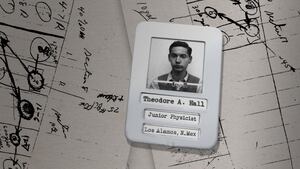First and foremost, Hollywood does its job well. Very well. It creates spy movies and action adventures like Mission Impossible that keep us on the edge of our seats from opening shot to closing credits. But are they realistic? Not quite. And while we viewers instinctively know that, what we may not appreciate is how poorly real-life spy work would translate to the big screen.
I found (this is Katherine Reay writing) during my research of Cold War era agents, spies, officers, and operations, that “spy work” is—as a character noted within one novel—“a lot of nothing wrapped around that little dangerous something.” There is an incredible amount of behind-the-scenes time, research, and detailed attention that go into each covert operation, even if that “operation” lasts mere moments. The work is mostly waiting and watching, assessing and analyzing; days, months—sometimes years—of diligent, secretive, and quiet planning, all to create that one moment of thrill. I write thrill rather than danger because, believe it or not, all those quiet moments of planning and plotting are full of inherent danger.
Two famous spies and their experiences illustrate this perfectly. Soviet diplomat-turned-CIA-informant Aleksandr Dimitrievich Ogorodnik passed information to his CIA handler, Martha Peterson, via dead drops from 1975 to 1977. In a dead drop, a spy leaves vital bits of intelligence at a predetermined place at a set time so that, as soon as it is possible, the CIA handler can retrieve it. Ideally, there’s nothing for anyone to see. And, for two years, no one noted anything amiss. TRIGON (Ogorodnik’s code name) and Peterson passed information seamlessly. But after two years of “quiet,” both were betrayed in 1977 and that dramatic and final moment came. Peterson was swarmed by KGB officers on a Moscow bridge, arrested, and sent to the Lubyanka (the infamous KGB prison) for interrogation, before being exiled from the Soviet Union. Ogorodnik was arrested as well and took his life by releasing and swallowing the CIA issued L-pill hidden inside his favorite writing pen.
A few years later Soviet engineer Adolf Tolkachev reached out to the CIA, offering the U.S. access to Soviet military schematics. It took several more attempts and two-and-a-half years before the CIA believed he was sincere and took the next step to authenticate his interest and intent. Once Tolkachev was brought on board, he communicated with his handler through clandestine personal meetings, dead-drops, and brush passes. And in each case, if executed well, no one noticed anything strange about the man or his movements. To reach a safe house, both Tolkachev and his handler underwent as much “dry cleaning” as necessary to shed all KGB surveillance and they took tremendous care during brush passes as well. Brush passes were split-second, choreographed hand-offs of information in a crowded place, and so well-timed and well-executed, that even a passerby right next to Tolkachev wouldn’t notice the quick hand-to-hand exchange. It was primarily through these not-so-visually dramatic moments that incredible amounts of information regarding Soviet military systems were conveyed. In fact, Tolkachev passed along so much detailed information to the CIA that it is thought he saved the U.S. Defense Department over $1 billion in the early 1980s. They didn’t have to chase what the Soviets said they were developing as, through Tolkachev, the U.S. knew exactly what the Soviets could and could not create. The KGB arrested Tolkachev in 1985 and he was later executed.
Nevertheless, in both cases, until those final arrests, there was never much to see—and that was the point. The relationship and the dangerous dance only worked if no one was any the wiser, and in both cases these spies continued their work with the CIA successfully for more than two years.
Granted, I write about a pre-technological time when messages were left at dead drops and signals conveyed with wax pencils on walls, tiny notes hidden within lipstick tubes, and cyanide pills secreted away in pens, but Brittany worked and writes in a contemporary context and will share a little about how—even today—it’s all about the behind-the-scenes planning.
Brittany Butler here. And, after a decade in the CIA, I agree… It’s not all Hollywood’s fault. Hollywood’s job is to create compelling and enjoyable TV shows and films about the CIA, not to reveal the CIA’s sources and methods. And quite honestly, we don’t want them to get it right. If they did and our communication methods were revealed, we would have a very hard time keeping our work secret, and more importantly, our CIA employees and assets safe. And, it’s also true, that critical work is quiet, methodical, and very much behind-the-scenes.
Having spent most of my time working within the CIA’s Directorate of Operations (the section that is responsible for the recruitment and handling of spies) I can tell you that technology certainly plays a large role in how we communicate with our developmentals (what they’re called before they’re officially “recruited” as sources).
First, Katherine is right, the source must first prove themselves before they’re issued any type of covert communications system. A lot goes into determining if they’re ready for that… lie-detectors, corroborating their intelligence, background investigations, etc. The source must also prove that they’re trustworthy—do their motivations make sense? Are they doing this just for the money? If the answers to these questions aren’t answered favorably, we have a problem on our hands. The source/asset may not be ready for clandestine work.
Also, there is a higher level of asset validation required to issue our most sensitive technical gear to communicate back to the CIA. We don’t leave messages on walls anymore and, sometimes, our sources must travel through security checkpoints with highly sensitive CIA-issued equipment and sometimes that could even involve being searched by a hostile intelligence service. So the CIA must make certain that an asset is trained on how to avoid these types of situations or, if they’re unavoidable, how to handle being pulled into secondary screening at security checkpoints with our gear. The CIA worries about the asset getting caught, detained, tortured and, likely, killed. We also worry that the communication technology may fall into the wrong hands and become compromised. And, if that device was issued to more than one source, we would certainly worry about our other sources being compromised or caught.
The concealment of these communication technologies is also very important. Not only must the concealment adequately hide our technical gear—it also has to be consistent with a source’s cover. By that I mean if your source is a traveling shoe salesman (yes, I know that’s not really a thing) it wouldn’t make sense for him to be lugging around a huge computer with multiple hard drives.
All this is to say that the CIA takes communicating with their sources clandestinely very seriously. It’s quiet, it’s unobserved, and it’s vital. It’s especially important now with Russian-sponsored hackers posing a serious and persistent threat to U.S. infrastructure. We must remain more vigilant in safeguarding our communication networks. The CIA has to remain focused on countering state-sponsored cyber threats to our critical infrastructure, and sometimes that means taking it old-school and only communicating via in-person meetings. These can be extremely challenging and sometimes impossible to coordinate, without significantly risking the safety of both the CIA handler and the asset.
While we have largely moved beyond the days of dead drops and secret writing at the CIA, the risks are still very much the same, which makes the job of espionage all the more dangerous for anyone involved. But if we did it right during the Cold War era, which Katherine writes about, or we do it right in the contemporary time in which Brittany worked and now writes, no one will ever see a thing. All that said, Hollywood does a great job at what they do best—making us believe the intoxicating and dramatic dream of the spying life—and both Katherine and Brittany eagerly anticipate the next box office thriller.
Katherine Reay is a national bestselling and award-winning author of several novels, including A Shadow in Moscow and her recent release, The Berlin Letters, a Cold War spy inspired by the true women serving in the CIA’s top-secret Venona Project. Katherine currently lives outside Chicago with her husband and three dogs, always hoping her three adult children will come visit soon.
Brittany Butler is a former CIA targeting officer with first-hand knowledge in the recruitment and handling of spies and the dismantling of terrorist networks abroad. A staunch advocate for Middle Eastern women’s rights, Brittany has worked to promote the rights of disenfranchised Afghan women and girls, and now works within her local community to resettle Afghan refugees. The first in a series, The Syndicate Spy combines fascinating facts with heart-stopping fiction, telling the story, as only Brittany can tell it, of how female intelligence officers utilize both their intellect and skills to see beyond religious and cultural barriers to bring peace to this war-torn region. Brittany lives by the ocean with her husband, three sons, and her dog, Gus.





